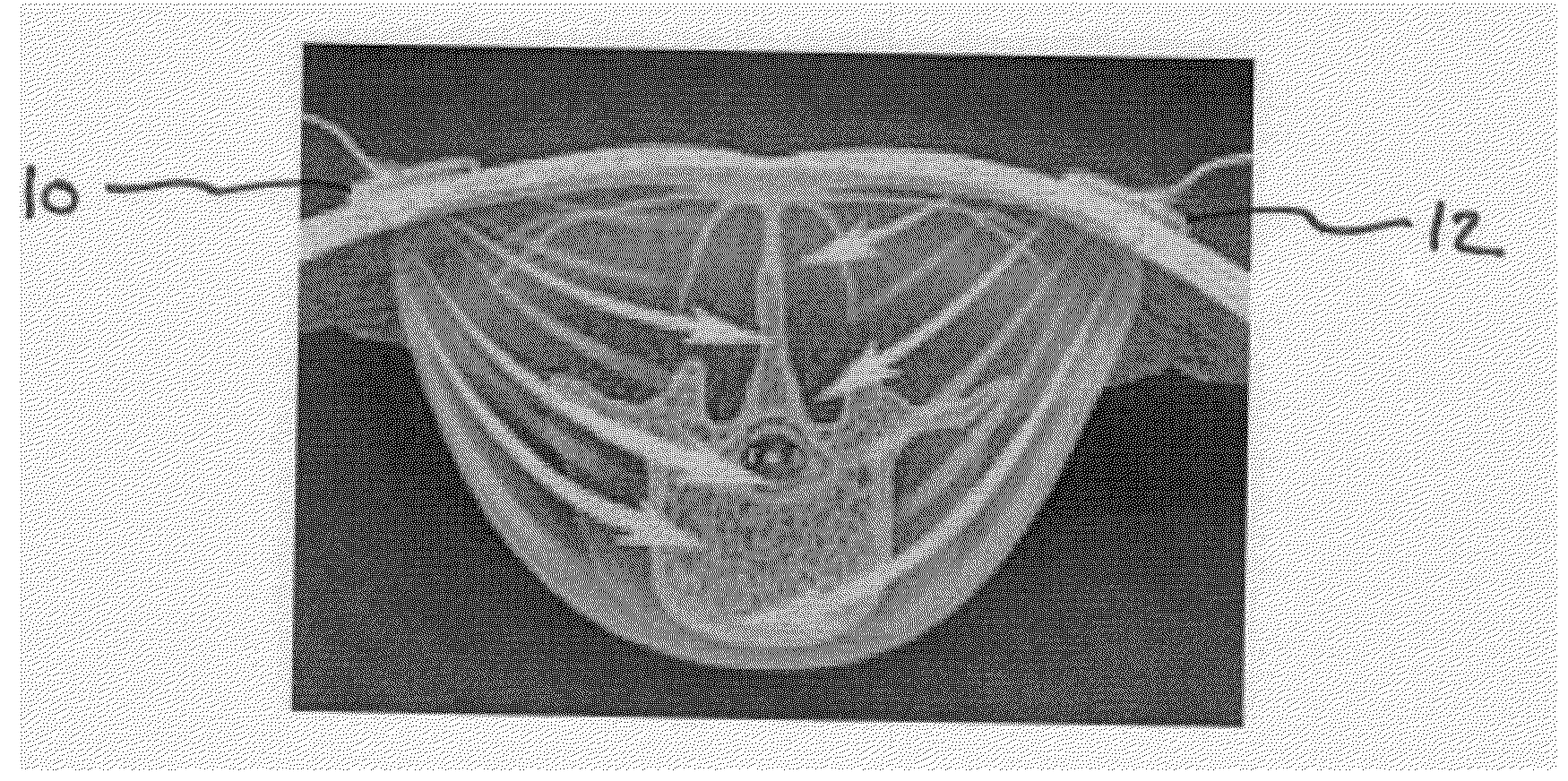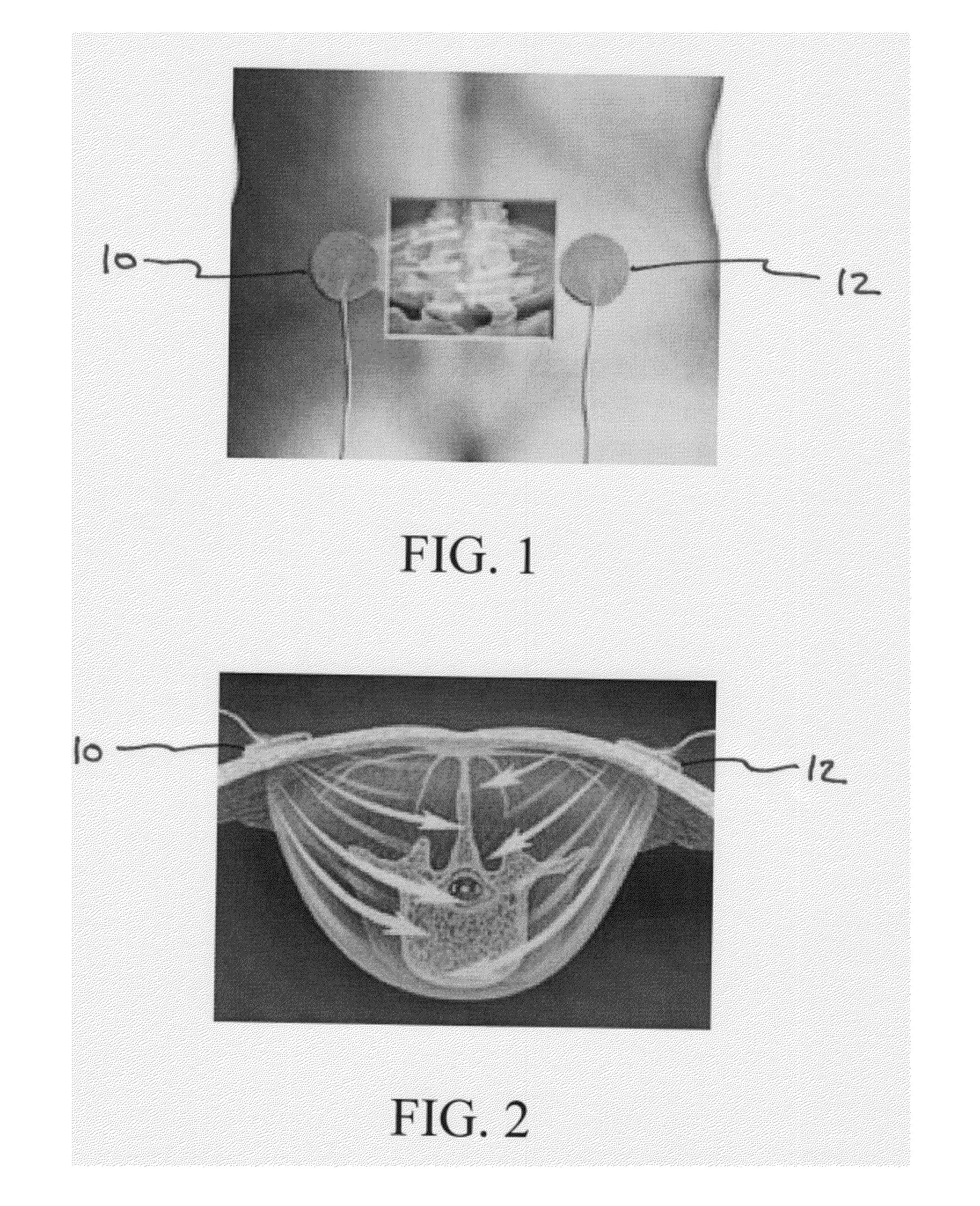Method for treating degenerative disc disease using noninvasive capacitively coupled electrical stimulation device
a capacitively coupled electrical stimulation and degenerative disc technology, applied in the field of noninvasive methods for treating degenerative disc disease, can solve the problems of less hydration of the tissue, less able to transmit load, less fibrous, etc., and achieve the effects of reducing pain, preventing further degeneration of the disc, and restoring the mechanical properties of the spin
- Summary
- Abstract
- Description
- Claims
- Application Information
AI Technical Summary
Benefits of technology
Problems solved by technology
Method used
Image
Examples
Embodiment Construction
[0014]For the purpose of promoting an understanding of the principles of the invention, reference will now be made to the embodiments illustrated in the drawings and specific language will be used to describe the same. It will nevertheless be understood that no limitation of the scope of the invention is thereby intended, such alterations and further modifications in the illustrated device and such further applications of the principles of the invention as illustrated therein being contemplated as would normally occur to one skilled in the art to which the invention relates.
[0015]The present invention provides a new method of treating degenerative disc disease (DDD) by using a noninvasive capacitively coupled electrical stimulation device that is compact, light and easy to use, and yet highly effective in operation. In the method according to one aspect of the present invention, two or more electrodes, e.g., electrodes 10 and 12 in FIGS. 1 and 2, are applied noninvasively on the ski...
PUM
 Login to View More
Login to View More Abstract
Description
Claims
Application Information
 Login to View More
Login to View More - R&D
- Intellectual Property
- Life Sciences
- Materials
- Tech Scout
- Unparalleled Data Quality
- Higher Quality Content
- 60% Fewer Hallucinations
Browse by: Latest US Patents, China's latest patents, Technical Efficacy Thesaurus, Application Domain, Technology Topic, Popular Technical Reports.
© 2025 PatSnap. All rights reserved.Legal|Privacy policy|Modern Slavery Act Transparency Statement|Sitemap|About US| Contact US: help@patsnap.com


